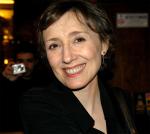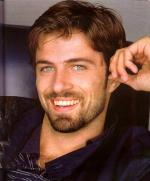AIt should be noted that the novel is a very complex and layered story, a murder mystery centered at a background of political, philosophical and theological events and discussions. As such, the story needed to be simplified greatly to accomodate a two-hour movie. In general, the focus of the movie is largely on the Medieval murder mystery, with more suspense added and the historical and philosophical themes taking second place.The book spends several chapters elaborating upon the historical background and politics of the time. Basically, for years there has been a struggle for power going on between pope John and emperor Clement, monarch of the Holy Roman Empire, leading to the emperor declaring the pope a heretic. This has also caused a rift in the religious world, with the clergy torn between their loyalty to the emperor and the Holy Roman Church. The religious world itself had already become a complex organisation of religious groups over the years. Differences in interpretation of holy scriptures caused the church to become divided into separate orders that are often at odds with each other; some orders such as the Dolcinites have even been considered criminal and heretic, and were therefore eradicated by the Inquisition. The movie omits most of this background, merely referencing the Dolcinite heretics and acknowledging the precarious status of the Franciscan monks, who are opposed by the pope but enjoy protection of the emperor.Equally large parts of the book detail theological discussions between characters on a variety of subjects; most did not make it into the movie, except for the discussion about laughter and comedy which is central to the climax of the story.In other parts, the movie omits or changes several parts of the plot:- Adso van Melk is a Benedictine monk in the book, but a Fransiscan monk in the movie. Malachi is called Malachia in the movie.- In the book, William's deductive reasoning is showcased when he arrives at the monastery and is able to guess the name and color of the abbot's horse from a few isolated perceptions. In the movie, he derives the location of the abbey's toilet by cleverly piecing together some facts.- In the beginning of the movie, the abbot, Malachia and Jorge are talking together, contemplating whether they should ask William for help in solving Adelmo's death. As the book is told entirely from Adso's perspective, there is no such scene in the book.- In the movie, William and Adso are nearly killed by a falling rock (supposedly dropped by Salvatore), which does not happen in the book. In the movie William learns about Adelmo and Venantius from Salvatore, in the book this information comes from interviewing several monks, including Berengar himself (in the movie they never get to talk to him). In the book it is Adso who has several conversations with Salvatore, but these mostly concern his and Remigio's heretic past.- In the book, William and Adso make several trips to the library, even though they were directly forbidden by the abbot. Its intricate design of interconnected rooms with dead ends make it a labyrinth almost impossible to navigate, so they don't start making progress until they construct a map. During one of their trips, Adso pursues someone but he is temporarily poisoned from smoke coming from burning hallucinogenic leaves left by the mysterious person. In the movie, they make only two trips. The library has a different lay-out; rooms are interconnected by descending and ascending stairways, and they use a thread to navigate. It is William who nearly falls to his death through a trapdoor.- In the book, William admits to having been being an Inquisitor; however, although there is antagonism between him and Bernardo Gui, there is no mention of the story where William was coerced by Gui into condemning a man. Likewise, in the movie, Gui taunts William by appointing him as fellow juror in the trial of Remigio and Salvatore, which does not happen in the book.- The girl features much more prominently in the film compared to the book. In the book Adso doesn't see her until they meet in the kitchen. After the trial, Bernardo Gui leaves the abbey for Avignon, taking Remigio, Salvatore and the girl as prisoners to their executions; the girl is only lamented by Adso afterwards and never seen again. In the movie, Adso notices the girl early in the story when she is among peasants scavenging for food, and later he visits her house. At the end, Bernardo Gui executes both Remigio and Salvatore at the monastery, but is killed himself by the angry peasants before he can kill the girl. Adso finally leaves with William, has a final moment with her, and commemorates her in his last words.- In the movie, Malachia is seen killing Severinus and subsequently warning Remigio to escape. In the book, Severinus is found dead and Remigio is ransacking the infirmary looking for the book, suggesting he was the killer. However, William later deduces that Malachi must have taken the book and then hid inside the infirmary after killing Severinus, thereby putting the blame on Remigio.- In the book, Adso has a very strange and surreal dream during a sermon, featuring many people from the abbey as well as many Biblical characters. He tells William about it, who explains that Adso has effectively dreamt parts of the Cena Cypriani, a satirical book which he must have read once and recalled from memory. William recalls how this book was often in the same volume as Aristotle's Poetics, an even more controversial book of which very few copies remain. This gives William the defining clue that the lethal book everyone seems so interested in, is actually the Poetics.- Benno of Uppsala, one of the monks who helps William and Adso in their investigation but is also a suspect, was omitted from the movie, as well as Nicholas the blacksmith, who creates a pair of spare glasses for William when his old pair is stolen. Alinardo, the eldest monk in the abbey, is also absent; William finds out that Alinardo still holds a grudge against Jorge for beating him to the post of librarian 50 years earlier.- In the book, William informs the abbot about his suspicions almost near the end (in the movie halfway through). The abbot, deducing who the person responsible for the killings is, orders William to leave, intending to resolve the matter himself. William ignores the abbot and enters the library, learning that Jorge has already trapped the abbot inside a secret passage, allowing him to suffocate. Jorge proclaims the abbot's death, the sixth victim, as the sixth trumpet heralding the coming of the Antichrist accoring to the Book of Revelations. Jorge tells how he got to be librarian in favor of Alinardo, as he managed to obtain many rare books for the monastery. With Jorge's own planned suicide, he intends to become the seventh trumpet, upon which William remarks that Jorge himself must be the Antichrist. William and Adso try to stop Jorge from eating the book, and during a struggle, Jorge throws a lamp down and starts a fire. When he manages to throw the Poetics in the fire, William pushes him angrily against a bookcase, and the entire library burns down, presumably burning Jorge with it.- Spreading of the fire destroys the entire monastery during a three-day burn. William escapes the library empty-handed, and is saddened to conclude that all the time, he was searching for a murderer with a plan, while there was none: it was simply a chain of events he merely unraveled by coincidence, leading him to the conclusion that there is no order in the universe. In the movie, William has to make a tedious choice as to which books he can save at the end, which he takes home.- William and Adso leave the abbey as in the movie, returning to Adso's hometown and saying their goodbyes. Adso later learns that William has died during one of the Plague epidemics. Many years later, as an older man, he goes on a voyage and makes a detour to the old monastery. He finds only destroyed and overgrown ruins, although the library walls still remain. Inside, he finds pages and fragments of books, which he collects and takes home. Although he cherishes these relics, it leads him to the realization that they are mere memories of things that are now lost.
















